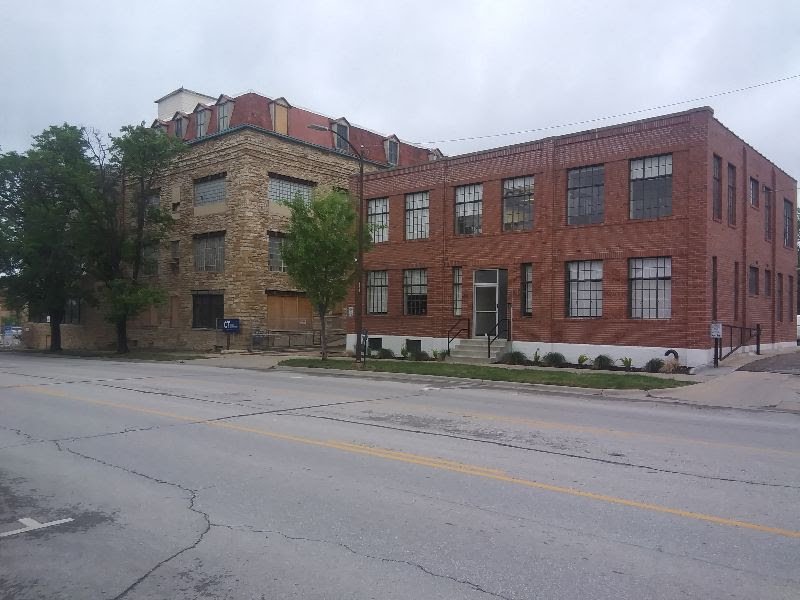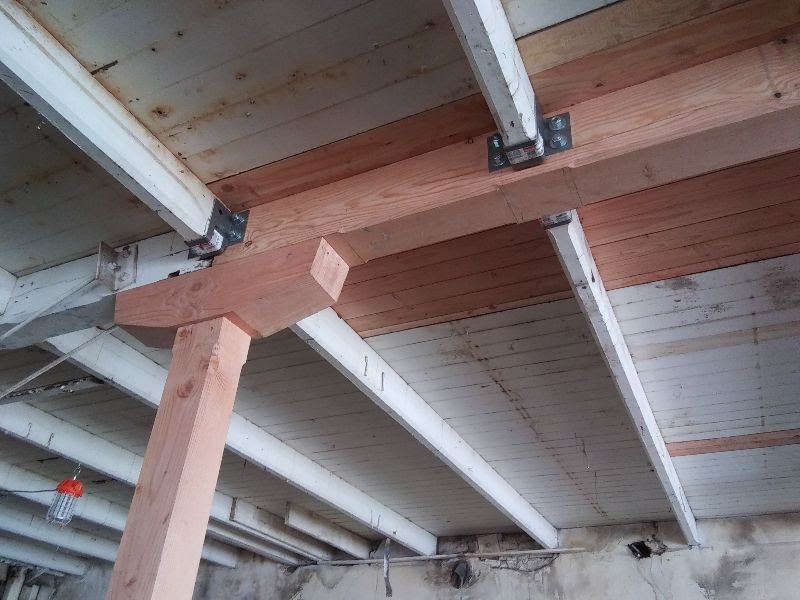LPA Announces Spring 2024 Preservation in Progress Awards
/LPA’s Spring 2024 Preservation in Progress Awards focus on two major projects in the downtown area—one just now coming into view and the other easily recognizable—and honor a group at Haskell Indian Nations University that’s restoring deep Native cultural connections as they work to restore native ecosystems on campus.
The Reuter Organ Company Buildings, 612-614-616 New Hampshire St.
KHRI 045-6867
A major preservation story is unfolding in the historic manufacturing area near City Hall and the river. Matt Gilhousen, who purchased the Reuter Organ property in 2020 and rehabilitated 614-616 in 2023, has decided to lead his team of building professionals into a rescue of the two oldest buildings of the group, which have been unoccupied since 2001.
This group of three structures—listed in the Register of Historic Kansas Places in 2020 by a nomination written by Rosin Preservation—is steeped in Lawrence history. The three-and-a-half story middle structure, with a full basement and an upper mansard half-story addition, originally was constructed in 1882 as the Wilder Bros. Shirt Factory. Reuter Organ Company, a Lawrence firm with a national reputation, began occupying the space in 1919 and built a three-story addition on the north—designed by construction engineer R. T. Wilson, who primarily designed churches—to house its pipe-fabrication activities.
Reuter further expanded its operation in 1927 by moving its administrative staff to a new two-story brick building on the south side of the property and connecting it to the middle structure with an enclosed second-story walkway. Reuter began moving some of its business off site in 1971 before moving to a new building on the northern outskirts of Lawrence in 2001. (That building was sold in 2002 and the company continues on a limited basis.)
After two decades of neglect, the old Wilder building was suffering from a failing roof, which triggered failure of original floor support systems down to the basement level. The anticipated cost of providing a new roof and installing new support systems was significant enough to eliminate any halfway restoration considerations. Gilhousen’s choice was to either walk away from the building or invest considerable effort and funds to finish the project. Fortunately for Lawrence, Matt decided in December to go forward, and at this point a new roof and supports are all in place.
It helps that Matt and a close circle of professional helpers, including Scott Trettel and Backus Construction, have been through major rehabs before—though not to the degree that this job requires. Indeed, this is the third PIP award presented to this team, with the first being the Stubbs Building at 1101 Massachusetts St. in 2019 and then the Broom Factory/Wiley’s Grocery building at 401 Elm St. in 2021. Added to the team now are Rau Construction Co., whose expertise in rescuing failing historic structures has been critical to this project; CT Design+Development for spatial planning and design; and Bob D. Campbell & Co. as structural engineers. The project also is taking advantage of both federal and state historic tax credit programs.
The Wilder and Reuter buildings are being converted to modern office and residential uses, but the large open interior spaces will undoubtedly retain the structures’ manufacturing vibe. Meanwhile, the brick administrative building, known to those who were familiar with these buildings in the Reuter days as ‘Lil’ Red’, already is fully leased.
Just a few months ago, those in the know about this property were just hoping a heavy snow wouldn’t send the upper floors of the Wilder building collapsing into the floors below. Now we are breathing a sigh of relief knowing that the building is once again solid, and we can look forward to it being brought back in a way that will do our community proud. This is one to watch as 2024 unfolds.
Douglas County Courthouse, 1100 Massachusetts St.
KHRI#045-3010-0008
There has been significant construction activity at and below ground level at the Douglas County Courthouse since last September, but what exactly has been going on inside that fence that surrounds the property? As part of their Facilities Master Plan, the county commissioners have authorized two separate phases of work designed to keep this 1904 building around for decades to come.
Listed on the National Register of Historic Places in 1975, this is the only building ever designed for use as the seat of county government in Douglas County. Prior to 1904, the county had always rented space, and taxpayers wanted something permanent. J.B. Watkins donated four lots for the site, and the county contracted with Lawrence’s own John G. Haskell and rising young Kansas City architect Frederick C. Gunn to work together to design the structure. The result was a massive three-and-a-half story native-stone masterpiece with carved stone ornamentation and a six-story square clock tower with a pyramidal roof.
Recently, however, the building had been suffering from water seepage into working spaces in the basement area. Work on this began last fall, with architectural services provided by Hernly Associates, and included excavating around the building to a depth of approximately six feet below grade level to allow foundation stone to be repaired and then waterproofed. A buried leader system is being installed to pick up roof drainage from the building’s downspouts and convey the water to the storm drainage system in the parking lot south of the building.
The stone treads of the north steps needed replacement, and when they were removed it was apparent the stone cheek walls and supporting substructure also needed replacement. The 49-year-old electrical transformer system serving the building also is being replaced, requiring an expansion of the screened mechanical area at the southeast corner of the building.
A second phase, with architectural services provided by Treanor HL, involves interior rehabilitation of the county commission chamber on the second floor. This space was damaged in 2022 by a malfunction in the fire-suppression sprinkler system.
The upcoming expansion of county government to five commissioners from three also creates the need for changes to that space. The project will achieve this while restoring the chamber room to its original configuration, based on a 1913 photo. The dais where commissioners sit will now accommodate five and also be ADA accessible. Damaged or repositioned woodwork finishes will be restored and a new chandelier will replicate the original one. B.A. Green Construction Co. is the general contractor for both phases of the project.
The county is using Kansas historic tax credits for this project, saving taxpayers money while ensuring that the work meets design and performance standards necessary for buildings on the national and state historic registers. Be on the lookout this summer for additional above-grade stone masonry rehabilitation work to begin. Thanks to the county commissioners and staff for their careful stewardship of this landmark downtown building.
Haskell Greenhouse
Graphic provided by Haskell Greenhouse
An important part of campus at Haskell Indian Nations University for years, the greenhouse is operating under a new dynamic since May 2022, when professor and longtime greenhouse leader Bill Welton hired Courtney Eddy King as a student researcher there. Now, under Courtney’s leadership, signs of Indigenous stewardship are flowing out of the greenhouse walls and affecting natural areas all over campus in restoration work that is at once holistic, cultural, collaborative, intentional and inspiring.
Courtney graduated from Haskell in December with a degree in environmental science and was named by Welton and Dr. Bridgett Chapin—director of the Kansas Idea Network of Biomedical Research Excellence—as lab and field research assistant, a position funded by a grant overseen by Dr. Chapin.
Campus natural areas including woodlands, wetlands, prairies and tributaries—even garden landscaping at the Haskell Museum and Cultural Center—are now feeling the healing touch of Courtney, a group of volunteers and six Haskell students hired to part-time jobs. Work in all of these areas has involved general cleanup followed by removal of invasive species. Once invasives are knocked back, native plant species are reintroduced to begin the long process, according to Courtney, of “mending relationships with traditional and native plant species and restoring Haskell lands to thriving, biodiverse native ecosystems.”
In the greenhouse, sacred and medicinal plants such as sweet grass, tobacco and white sage are grown, harvested and gifted to members of the indigenous community. Native seeds are collected and stored for redistribution to damaged natural areas. Traditional vegetables are grown in plots outside the greenhouse for distribution to Haskell students and staff.
To make Haskell’s natural spaces more inviting to respectful interactions by the community, work is underway to improve accessibility with safe trail systems and interpretive signage. Social media outreach—@haskellgreenhouse on Instagram—also is a major educational component of the program, and a new logo has been created for the greenhouse.
By working with the KU field station, Native Lands Restoration Collaborative, K-State and others, the greenhouse has broadened the educational scope for Haskell student researchers. That will help them be better prepared to take what they learn back to their own tribal communities and begin this land-healing work in other places.
While non-Native participants are welcomed, the priority is hands-on experience for Native students and community members. When Natives perform restoration work on damaged natural lands once cared for by tribes before colonization, damaged Indigenous cultural connections to lands that once cared for and nourished their ancestors also are restored.










